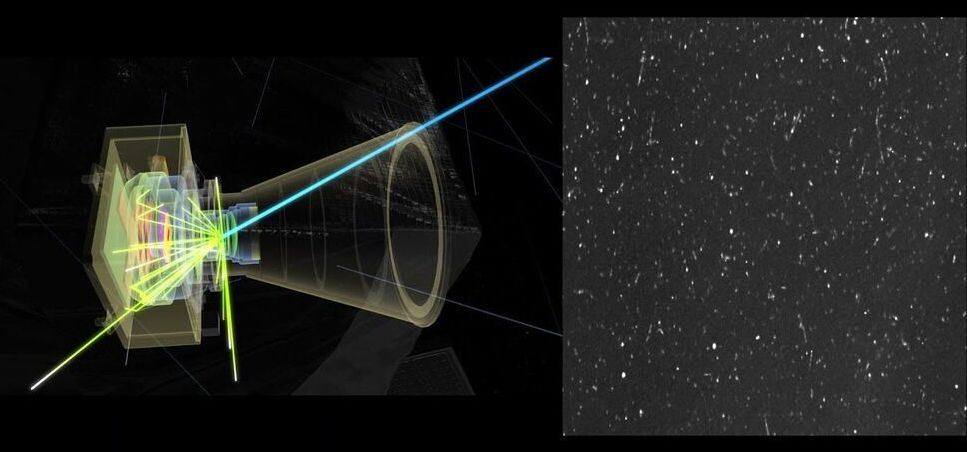Jul 15, 2021
Facebook drops funding for interface that reads the brain
Posted by Vivek Jaiswal in category: neuroscience
The company’s research into a mind-reading device is over, for now. Some scientists said it was never possible anyway.
The company’s research into a mind-reading device is over, for now. Some scientists said it was never possible anyway.
Hackers were targeting SolarWinds’ Serv-U software.
Microsoft reported Tuesday that it identified a zero-day exploit in SolarWinds’ software. The zero-day originated from a group of Chinese hackers trying to reach the US defense industry. SolarWinds has since patched the exploit.
United Airlines and one of its regional carriers each plan to buy up to 100 small electric planes that could be used on short-haul United flights.

The “show” starts with a robot grabbing a handful of dough and depositing it on a pan, where another bot flattens it, a third applies tomato sauce, etc. From dough-grabbing to inserting in the oven, preparing a pizza takes just 45 seconds. The oven can bake 6 pizzas at a time, yielding about 80 pizzas per hour. Once a pizza is baked to gooey perfection, a robot slices it and places it in a box, and it’s then transferred (by a robot, of course) to a numbered cubby from which the customer can retrieve it.
It’s a shame the pizzeria didn’t open during the height of the pandemic, as its revenues likely would have gone through the roof given that there’s zero person-to-person contact required for you to get a fresh, custom-made pizza in your hands (and more importantly, your belly!).
Continue reading “Watch Robots Make Pizzas From Start to Finish at an Automated Pizzeria” »
IBM chief data scientist John Thomas makes the case for building AI factories to increase adoption of best data science practices at scale.
Scientists have discovered a novel way to classify magnetized plasmas that could possibly lead to advances in harvesting on Earth the fusion energy that powers the sun and stars. The discovery by theorists at the U.S. Department of Energy’s (DOE) Princeton Plasma Physics Laboratory (PPPL) found that a magnetized plasma has 10 unique phases and the transitions between them might hold rich implications for practical development.
The spatial boundaries, or transitions, between different phases will support localized wave excitations, the researchers found. “These findings could lead to possible applications of these exotic excitations in space and laboratory plasmas,” said Yichen Fu, a graduate student at PPPL and lead author of a paper in Nature Communications that outlines the research. “The next step is to explore what these excitations could do and how they might be utilized.”

You don’t need to be a roboticist to make Spot dance. Learn how Spot’s Choreographer software and athletic intelligence bridge the gap between the creative and the technical process. https://bit.ly/36xIbkA
Bringing It All Together
Many of us swing through gates every day—points of entry and exit to a space like a garden, park or subway. Electronics have gates too. These control the flow of information from one place to another by means of an electrical signal. Unlike a garden gate, these gates require control of their opening and closing many times faster than the blink of an eye.
Scientists at the U.S. Department of Energy’s (DOE) Argonne National Laboratory and the University of Chicago’s Pritzker School of Molecular Engineering have devised a unique means of achieving effective gate operation with a form of information processing called electromagnonics. Their pivotal discovery allows real-time control of information transfer between microwave photons and magnons. And it could result in a new generation of classical electronic and quantum signal devices that can be used in various applications such as signal switching, low-power computing and quantum networking.
Microwave photons are elementary particles forming the electromagnetic waves employed in, for example, wireless communications. Magnons are the particle-like representatives of “spin waves.” That is, wave-like disturbances in an ordered array of microscopically aligned spins that occur in certain magnetic materials.
SMRs are cheaper and quicker to build than traditional reactors, and can also be deployed in remote regions and on ships and aircraft. Their “modular” format means they can be shipped by container from the factory and installed relatively quickly on any proposed site.
SHANGHAI, July 13 (Reuters) — China has started construction of the first commercial onshore nuclear project using its homegrown “Linglong One” small modular reactor (SMR) design, the China National Nuclear Corporation (CNNC) said on Tuesday, about four years later than planned.
CNNC originally aimed to start building the project at the Changjiang nuclear reactor complex on the island province of Hainan in 2017, but it has been subject to regulatory delays.
Continue reading “China launches first commercial onshore small reactor project” »

Trapped ions discovered at midlatitudes can have energies exceeding 100 megaelectron volts per nucleon. Their detection adds to our understanding of the powerful radiation environment around Jupiter.
Jupiter’s planetary radiation environment is the most intense in the solar system. NASA’s Juno spacecraft has been orbiting the planet closer than any previous mission since 2016, investigating its innermost radiation belts from a unique polar orbit. The spacecraft’s orbit has enabled the first complete latitudinal and longitudinal study of Jupiter’s radiation belts. Becker et al. leverage this capability to report the discovery of a new population of heavy, high-energy ions trapped at Jupiter’s midlatitudes.
Continue reading “NASA’s Juno spacecraft Detects Jupiter’s Highest-Energy Ions” »